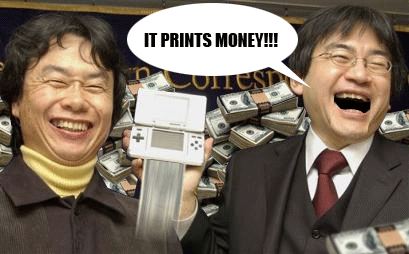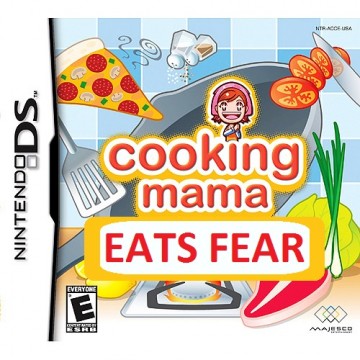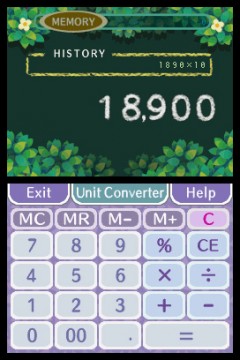
As has been made apparent throughout the week, Nintendo DS has an impressive library of titles that will go down in history as classics of the medium. While a system is no doubt defined by the games it offers, likewise the system needs to offer something unique to entice us from the get-go. Beyond the hardware of two screens, one with touch sensitivity, and a built-in microphone, there still exists the “big picture” of the insanely successful handheld. So, without further ado, we now share the biggest surprises and the biggest disappointments that “Project Nitro” offered.
BIGGEST SURPRISES
The Phenomenal Success of DS
Nintendo DS became something bigger than its own creators could have ever imagined it would. Game Boy Advance was an excellent and beloved system, and when DS was announced, the third pillar felt little more than something to tide handheld gamers over through PSP’s release, until the “true successor” to Game Boy would manifest itself. But in the blink of an eye, the dual-screened gaming machine went from being a system that launched with a port of one of the best in the Mario series to a system that birthed one of the new best in Mario, and alleviated any fears that the second screen was a gimmick, showing that two screens could make for twice the awesome. With the third hardware revision the system even spit out its safety of a Game Boy Advance slot, shedding the last remnants of its predecessor and emerging as a juggernaut in its own right.
The Swarming of Casuals
At first glance, many “hardcore” gamers may cry foul at the notion that a “swarming of casuals”– a statement that brings to mind images of locusts flowing over crops and livestock and leaving very few remains– is a “surprise” as opposed to a “disappointment.” But DS was able to blur the full-time/nights-and-weekends gaming line with a stream of excellent series that innovated and revitalized a market obsessed with sensory overload. Whether we want to admit it or not, we can’t be gaming the entire time. With at least forty hours per week, kids needing to go to school, and the mandatory and awkward family gatherings that seem to happen far more frequently than they should, to satisfy the gaming itch we need some pick-up-and-play.
Several of the past decade’s best puzzlers were released on the system, and don’t require the amount of effort needed to get an “A” in Metaphysics. Brain Training and Nintendogs offered novel other ways to eat up our small amounts of free time, and, no surprise, all of these titles got non-gamers’ attention, too, and soon nearly anyone was able to appreciate the joy handheld gaming provides. And once primed, those new gamers were emboldened to try more traditional games. Sure, we may not all literally play the same games, but our gaming family has grown, bringing love, money and growth to our favorite hobby. By capitalizing on simple gameplay and recognizable, tried-and-true franchises like Tetris and sidescrolling Mario, DS was able to bring in casual gamers while simultaneously satisfying the loyal fan base.
BIGGEST DISAPPOINTMENTS
Disorganized and Lackluster DSiWare Strategy
With WiiWare being home to some excellent titles–Dr. Mario, Tetris Party, the Art Style series– along with Virtual Console offering up most of our favorite classics, it only seemed natural that DSiWare would take that model and run with it. It didn’t. Instead, the notion of a portable Virtual Console was completely ignored by the powers that be, and a slew of less-than-inspired titles arrived from the Big N itself. A good portion of the titles made by Nintendo were simply bits and pieces from previously-released titles. If it couldn’t be broken up like Electroplankton, then Nintendo would take a successful series, append Clock to it, and call it a day. Meanwhile, other publishers would release the same apps with a different color scheme, or variations on games that were already available for free online. Yes, there are a few gems, such as a few Art Style games, Shantae: Risky’s Revenge, Cave Story, and Mighty Flip Champs, but DSiWare remains stereotyped, for now, by everything it wasn’t. Here’s hoping 3DS’s eShop doesn’t suffer the same fate.
Using Friend Codes for Everything
There are certain expectations of a modern game playing experience, especially one that transcends into the world of online gaming. After the much-maligned “friend codes” debuted, which only seemed to destroy friend-making potential than invigorate it, gamers’ cries were heard from around the world for a better online system. Sure enough, Nintendo heard– it just didn’t care to listen. The extent to which this was a missed opportunity is perhaps best represented by way of analogy: you know that video of the cute kid repeating “blood” over and over to his parents? Turns out, that kid is watching a film by Dario Argento. Nintendo gamers are the kid, desperately attempting to express how there is something entirely different to be experienced, and the parents represent Nintendo, thinking that the child is just confused and that what the kid speaks of really doesn’t exist as it is thought. Sure, Nintendo is looking for a “family safe” experience, but it’s about time they lighten up.
What do you think? Were these really the biggest surprises and disappointments? Do you think they should be switched around? Sound off in the comments below!




 ShareThis
ShareThis










